When attempting a lower carb lifestyle, many people think that involves just cutting out the bread and pastas; but a true low carb lifestyle involves being conscious of which foods weigh less on the carb scale than others, and that includes the seemingly healthy fruits and vegetables.
Here is a guide to make sure you’re choosing the best options for fruits, vegetables, and snacks.
Low-Carb Fruits and Berries – the Best and the Worst
What are the best and the worst fruits and berries to eat on a low-carb diet? Here’s the short version: most berries are OK low-carb foods in moderate amounts, but fruits are candy from nature (and full of sugar).
For more detail check out this guide, the lower-carb options are to the left.
Berries
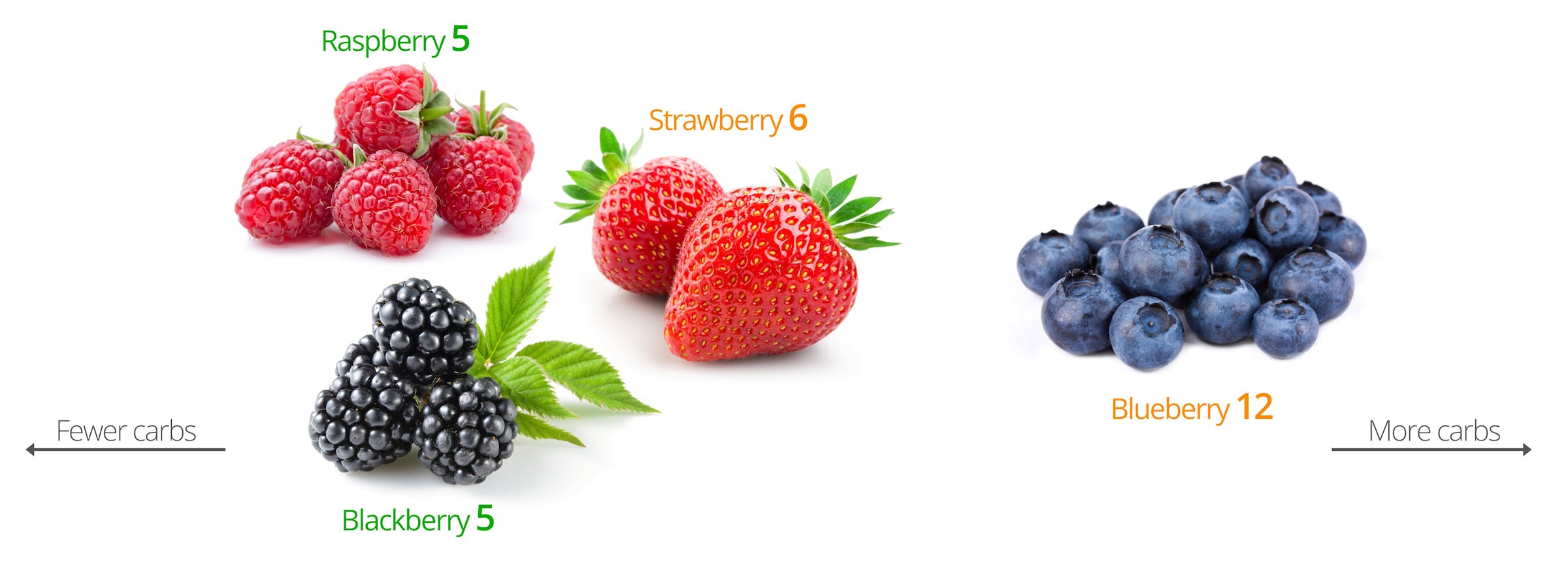
All the numbers are the percent of digestible carbohydrates i.e. net carbs (so the fibre is not counted).This means that 100 grams of berries (3.5 ounces or about three handfuls) – will contain that number of grams of carbs.
Raspberries, blackberries and strawberries can be eaten in small amounts on a strict low-carb diet, and you can have pretty much all you want if you’re on a more moderate low-carb diet.
Blueberries contain a bit more carbs, so don’t go crazy on them – on a strict low-carb diet only eat them occasionally in small amounts.
Fruits
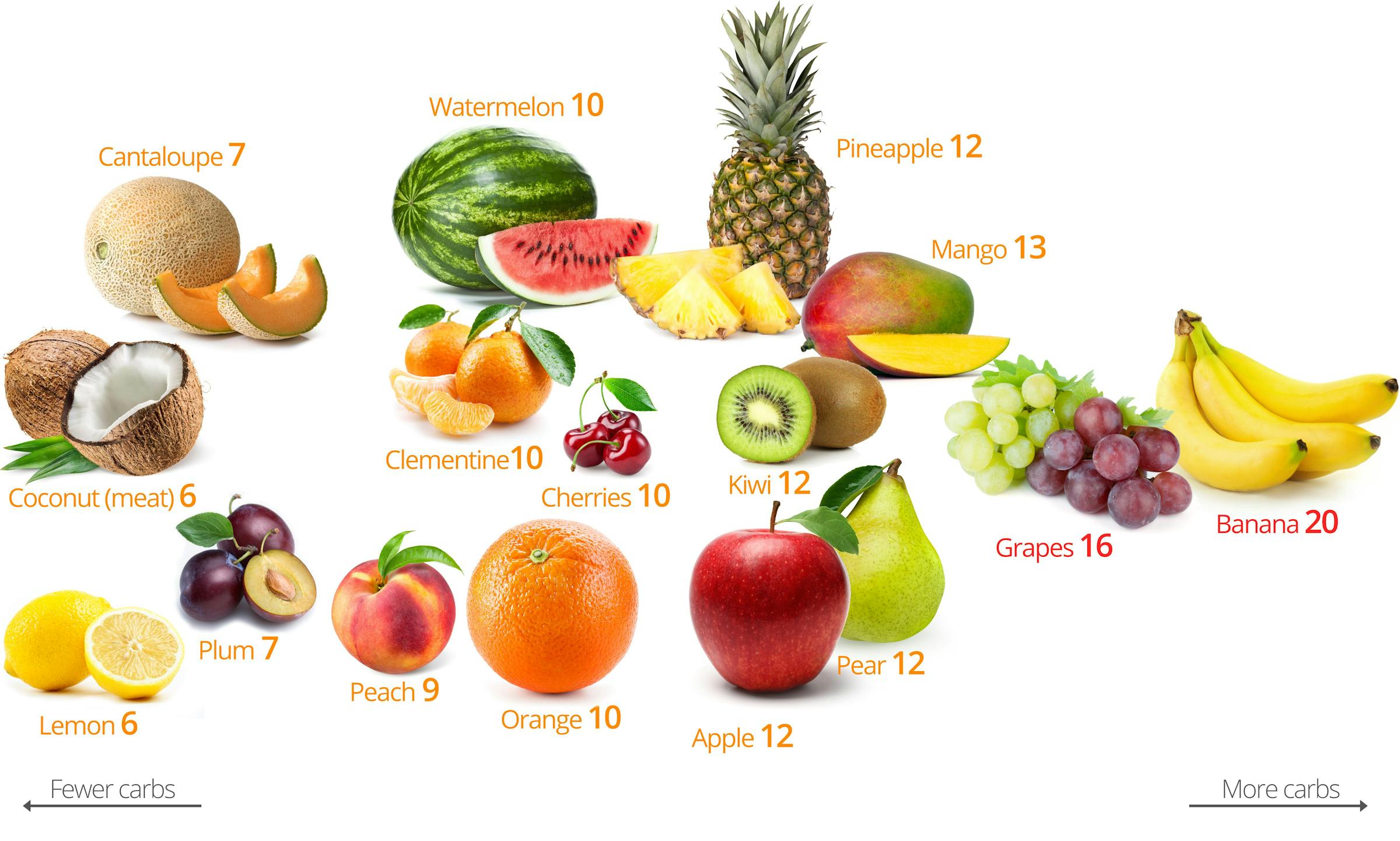
So how about fruit? As you can see all fruits contain quite a bit of carbs (mostly in the form of sugar). That’s why fruits are sweet! Fruit is candy from nature.For easy comparison all numbers are still grams of digestible carbs per 100 grams (3.5 ounces) of the fruits.
A medium-sized apple (150 grams) may thus contain about 18 grams of carbs.
How much fruit can you have?
This means that on a strict low-carb diet (<20 grams per day) you’re probably better off having some berries instead. Or perhaps a small fruit like a plum or a couple of cherries, once in while. You can eat plenty of vegetables instead. Any nutrient in fruit can more easily be had from vegetables – without all the sugar. So there’s no need for fruit.
Even on a more moderate low-carb diet (20-50 grams per day) you’ll have to be careful with fruit – probably not more than about one a day.
On a liberal low-carb diet (50-100 grams per day) you may be able to squeeze in two or three fruits a day, if that is your biggest source of carbs.
As you see grapes and bananas are the highest-carb fruits of them all.
Isn’t fruit natural?
Most people believe that fruit is natural, but today’s fruit in the supermarket have very little in common with what fruit used to look like before: 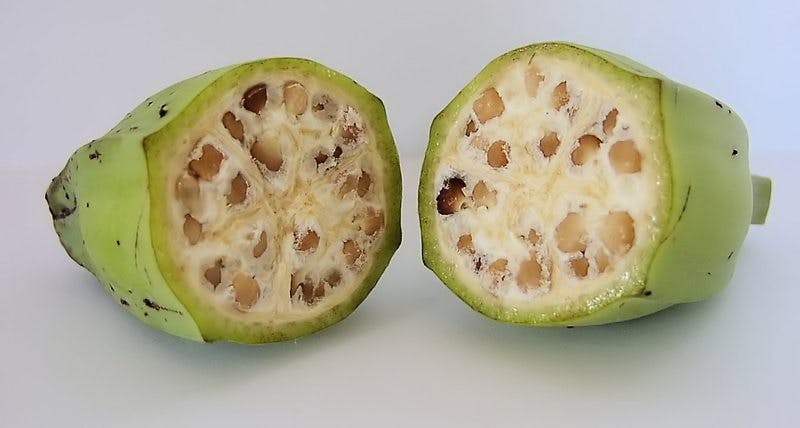
The fact still remains: Fruit is candy from nature.
Worse choices

Low-Carb Vegetables – the Best and the Worst
What low-carb vegetables are good? There’s a very simple rule:
- Vegetables growing above ground are low carb and can be eaten freely.
- Vegetables growing below ground contain more carbs, so you’ll have to be more careful with them (especially potatoes).
Like any rule it is not perfect, so have a look below.
Above ground
Carbs per 100 grams (3.5 ounces)
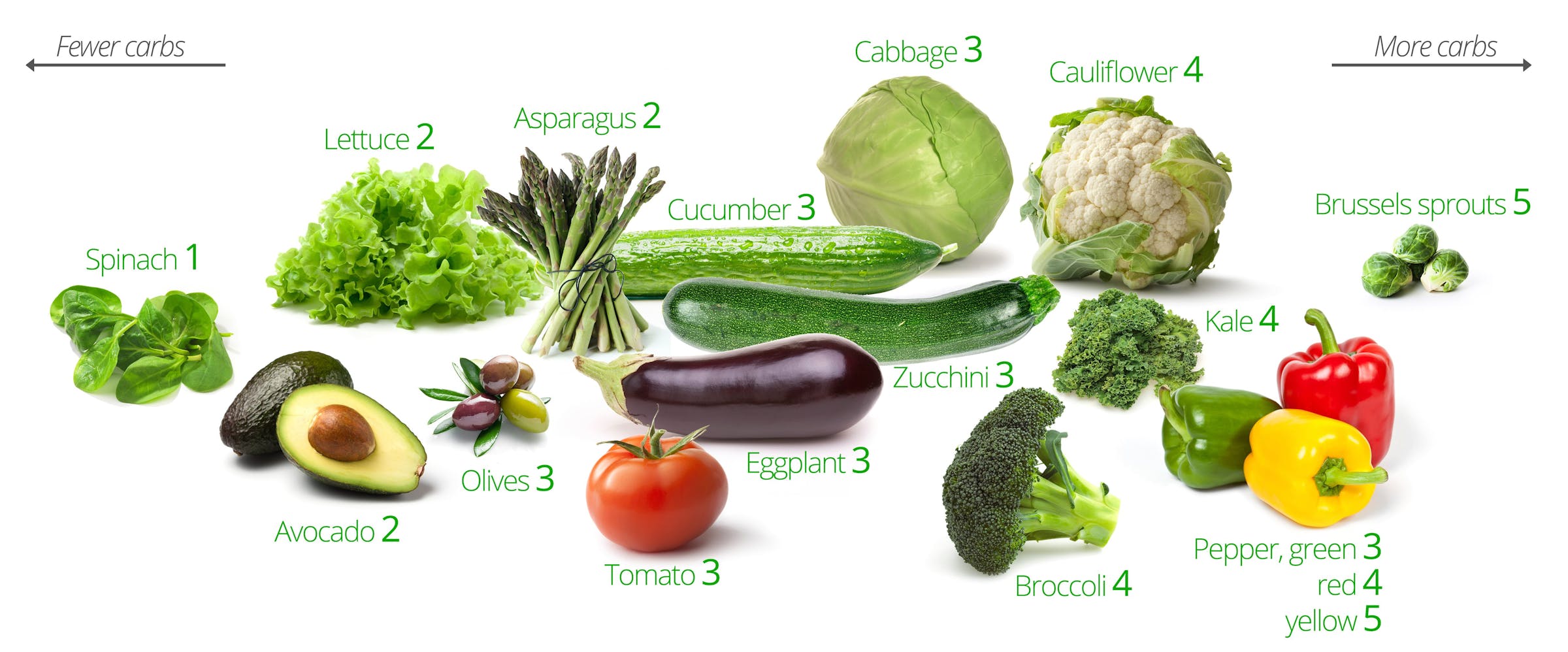
Below ground
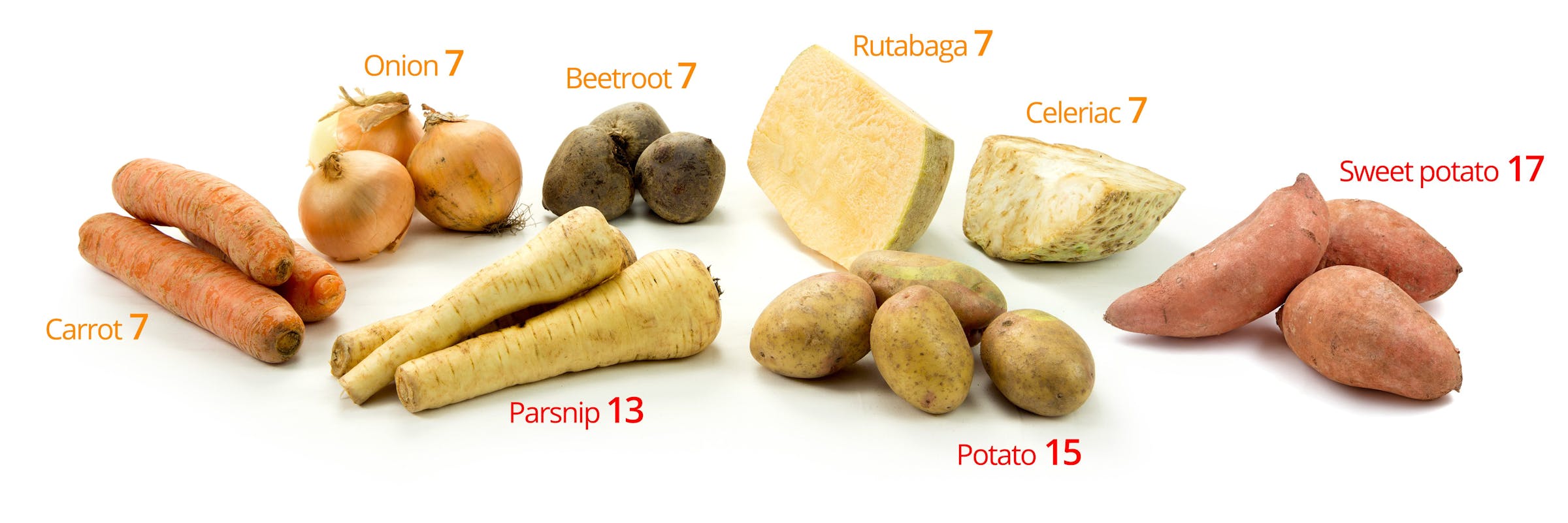
All the numbers are the percent of digestible carbohydrates (fibre is not counted). This means that a hundred grams (3.5 ounces) – the weight of an average tomato – of any vegetable will contain that number of grams of carbs.E.g. one average tomato has about 3 grams of carbs. One whole cauliflower head weights a lot more though, perhaps ten times more, and may thus contain about ten times 4 grams, i.e. 40 grams of carbs.
Note the clear difference between above ground and below ground vegetables.
Vegetables with less than 5 percent carbs can be eaten relatively freely. If you’re on a not-too-strict low-carb diet (more than 20 grams per day) you can probably eat all you want of all these low-carb vegetables.
If you’re on a strict low-carb diet (under 20 grams a day) you may need to be a bit careful with some of the vegetables. Specifically you should probably be careful around peppers or tomatoes – these carbs quickly add up towards the 20 grams a day limit. Just one medium-sized pepper may contain 6-8 grams of digestible carbs.
Peas, corn, beans, lentils, quinoa

Peas, corn, beans, lentils and quinoa contain more carbohydrates than other vegetables. You’ll have to be careful with them on a strict low-carb diet, eating them in very small amounts or not at all.Most of these plant foods are not classified as vegetables but as grains or legumes. They are not good low-carb options.
Grains and pure sugar

Wheat is not a vegetable, it is a grain. And anything made with flour contains lots of rapidly digested carbs. Avoid this as much as possible when on a low-carb diet. Whole grain products are just less bad – it’s like cigarettes with filter on them.Bread, pasta, rice, cookies etc. are not vegetables, and they are full of carbohydrates.
High fructose corn syrup – the sugary nutrient in soda – does come from plants (corn). But it is not a vegetable and it most certainly is not low carb.
Low-Carb Snacks – the Best and the Worst
What low-carb snacks are good? There’s a simple rule:
The best low-carb snack is no snack.
That’s right. Snacks are not needed on low carb, as the hunger should go away when doing it right. If you’re still hungry, you probably need to add more healthy fat to your meals instead.
That said, everyone wants a snack at least once in a while. So here are the very best options – and a few common mistakes to avoid.
No Preparation Needed
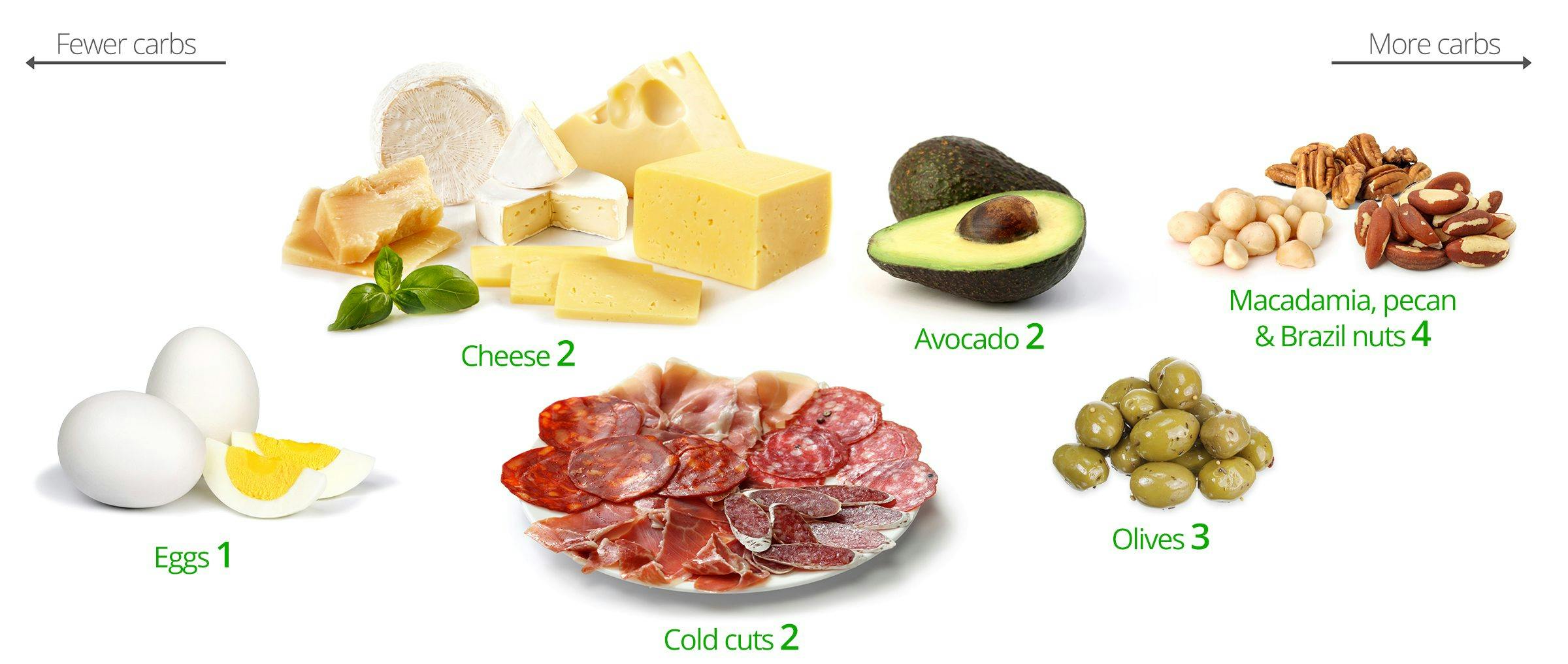
All the numbers are the percent of digestible carbohydrates (fibre is not counted). This means that 100 grams (3.5 ounces) of the food contains that many grams of carbs.
Eggs are a great low-carb option. Keep a few hard-boiled eggs ready for when you need a perfect snack.
Nuts are a low-carb snacks favorite. But be careful as the carbs quickly add up, especially if you eat cashews. Choose lower-carb macadamia, Brazil or pecan nuts instead. Low-carb nuts guide
Vegetable Sticks and Dip
Digestible carbs per 100 grams (3.5 ounces)
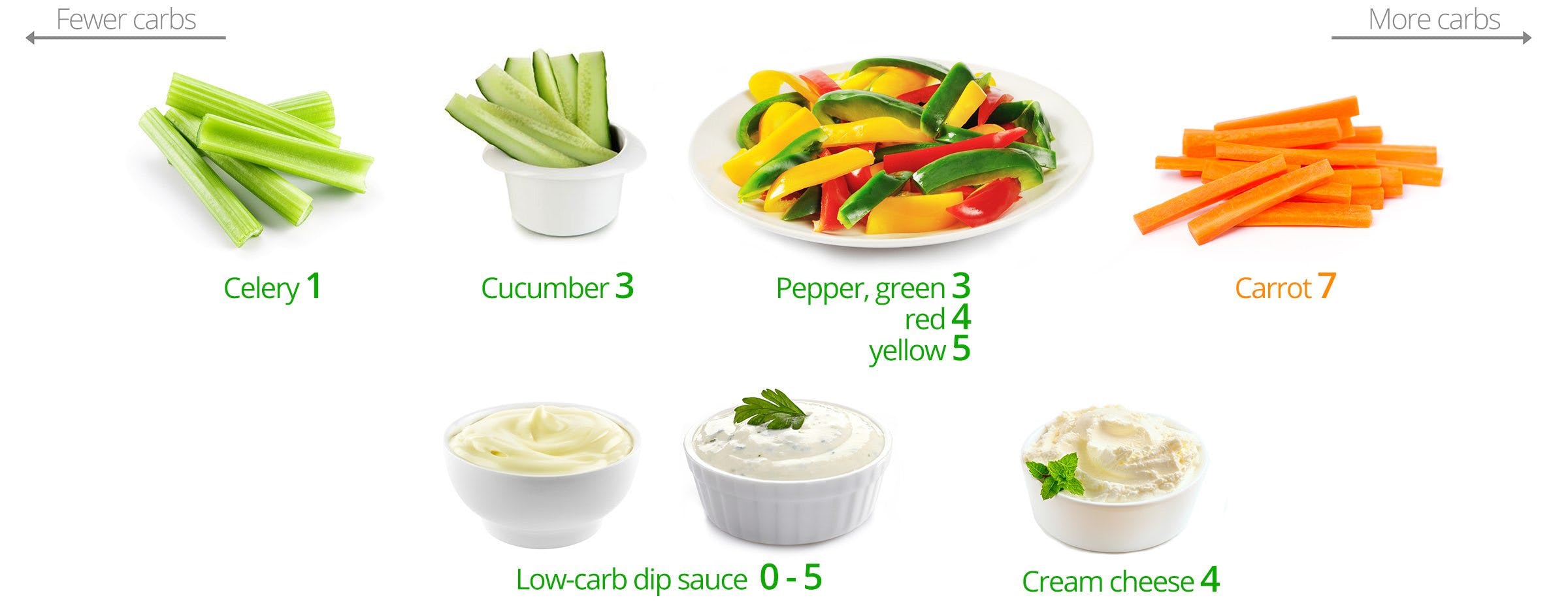
Vegetable sticks are relatively low carb, except for carrots that have slightly more carbs.Dip: Add cream cheese or any really low-carb and high-fat dip sauce.
Berries and Cream
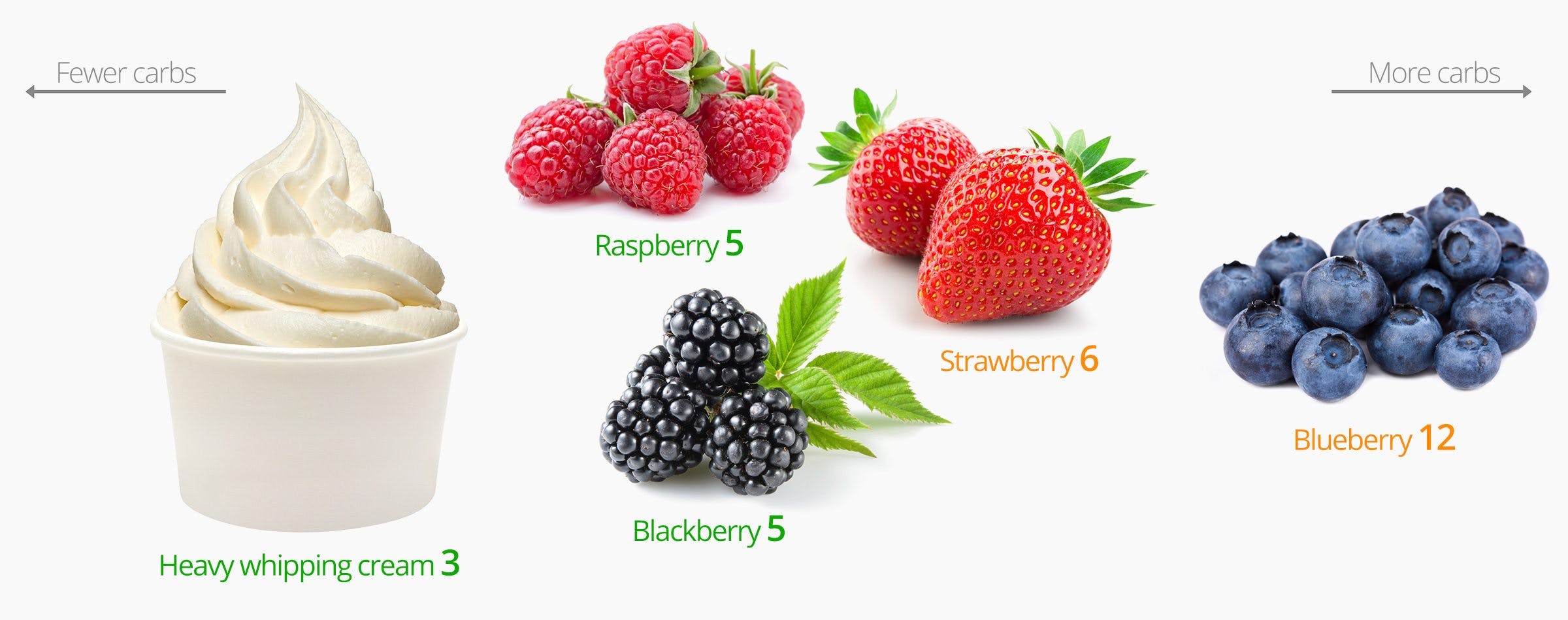
Heavy whipping cream: forget low-fat fake cream. Get real heavy whipping cream, ideally at 40 percent fat and definitely unsweetened (the natural sweetness is quite enough once you get used to it). Whip it and have it with the berries. Note however that this is absolutely delicious, and it’s easy to eat a lot of it when not hungry, slowing weight loss. So try to not overdo it.
Chocolate
Digestible carbs per 100 grams (3.5 ounces)

Chocolate is not low carb. However, you can occasionally get away with one or two thin squares of high-cacao chocolate (70%+) even on a strict low-carb diet. On a more liberal low-carb diet you could do it regularly.
- One small thin square (10 grams or less than half an ounce) of 86 percent chocolate contains about 2 grams of carbs.
- Change to 70% chocolate and you get about 3.5 grams per square.
- Regular chocolate can be 6 grams of carbs or more per square – not an option if you want to stay low carb.
More Options

Beef Jerky: Note that almost all available commercial options have tons of added sugar, which is why a normal carb count is 9 grams per 100 grams (3.5 ounces). Preferably mostly avoid this, or make your own.
Common Mistakes on Low Carb
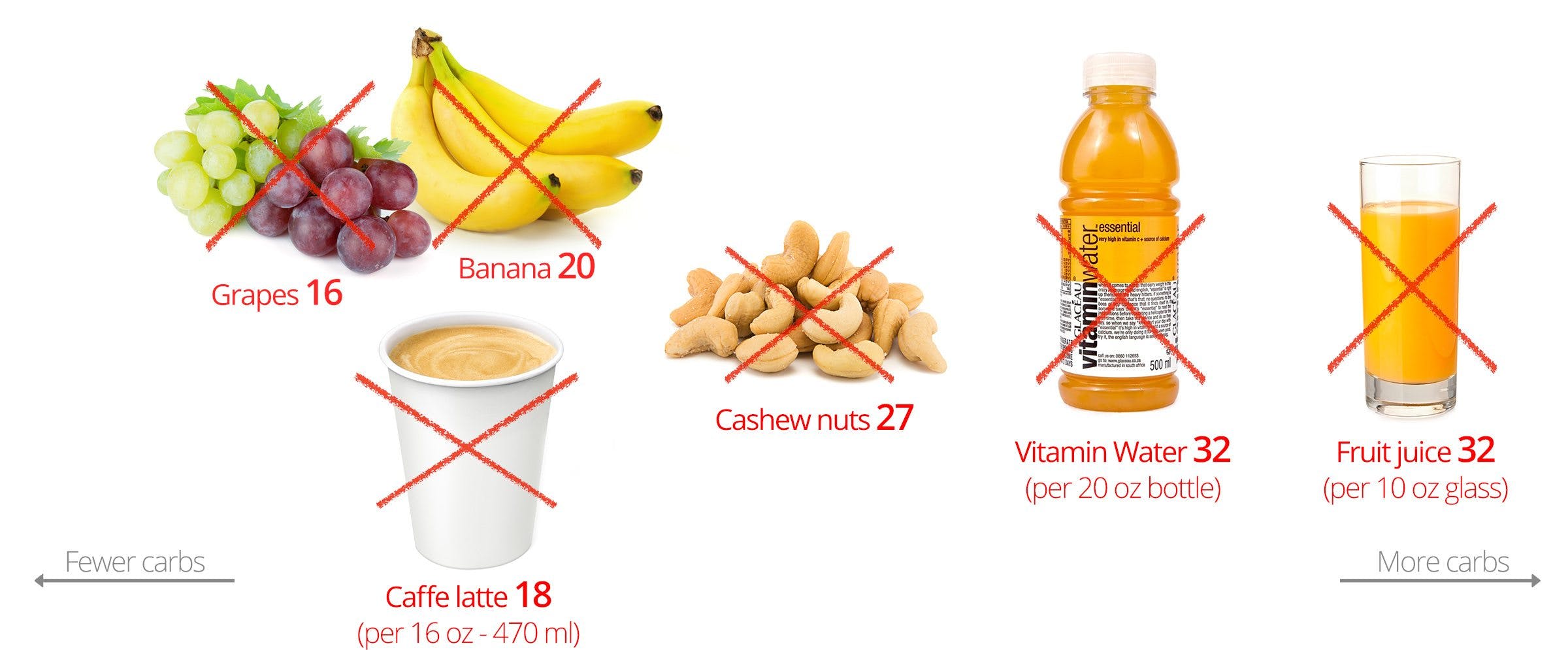
Caffe Latte: Note that there is a ton of milk in this, and milk is around 5 percent carbs (milk sugar). To keep the carbs low drink regular coffee instead, and add (if you need to) a few teaspoons of milk or cream.Juice and functional waters: These are full of sugar. Preferably avoid.
Fruit: Fruit is candy from nature and contains plenty of sugar. It’s not nearly as bad as drinking juice, but fruit will still mostly have to be avoided on a strict low-carb diet. A more liberal diet allows the occasional fruit. Bananas and grapes contain the most sugar of all fruit.
Cashew nuts: These contain a lot of carbs (other nuts are a lot lower).
Really Terrible Options

Of course these options are all terrible on a low-carb diet, as they are high in refined carbs and sugars. Avoid whenever possible.
Also be very skeptical of “low-carb” versions of chocolate, cookies etc. They are usually full of sugar alcohols and artificial sweeteners that raise blood sugar, make it harder to lose weight and maintain sugar cravings.

Sources:
http://www.dietdoctor.com/low-carb/fruits
http://www.dietdoctor.com/low-carb/vegetables
http://www.dietdoctor.com/low-carb/snacks
